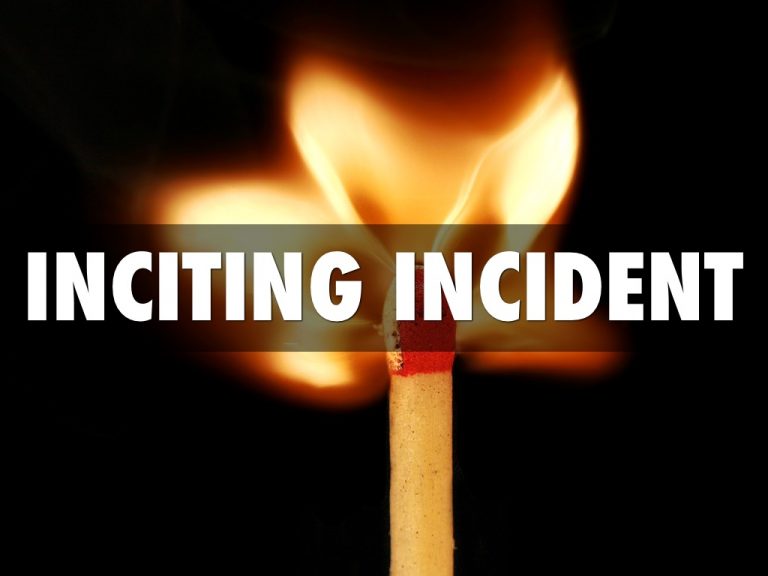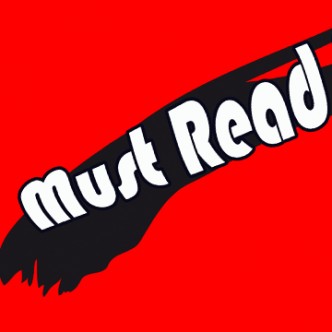2. Act Design by Robert Mckee

Progressive complications
Progressive complications it’s the second element of the five-part design of a story that goes from the Inciting Incident to the Crisis/Climax.
In a story it’s where the the plot gets more complicated and more conflict happens because there are more challenges for our main character/s to face.
Points of No Return
“The Inciting Incident launches the protagonist on a quest for a conscious or unconscious Object of Desire to restore life’s balance. To begin the pursuit of his desire, he takes a minimum, conservative action to provoke a positive response from his reality. But the effect of his action is to arouse forces of antagonism from inner, personal, or social/environmental Levels of Conflict that block his desire, cracking open the Gap between expectation and result.”
Meaning, after the Inciting Incident everything changes for our main character even if it is in a subtle way. It can be some piece of information that changes the perspective in which he envisioned his life, to a big Incident like the massive alien attack. After this event takes place the balance that was presented to us in the first act will never look the same. Meaning, you cannot return or point of No Return.
“A story must not retreat to actions of lesser quality or magnitude, but move progressively forward to a final action beyond which the audience cannot imagine another.”
This means that the tension in your film must keep increasing with the passing of time. If not you’ll be hooked for the first half-hour but you will start to lose interest after the Inciting Incident took place.
“To create forty to sixty scenes (a feature length film) and not repeat yourself, you need to invent hundreds”
The Law of Conflict
For increasing tension in your story and for moving your story forward you need to follow the Law of Conflict: Nothing moves forward in a story except through conflict.
Inner conflict it’s the best kind for that.
‘The quality of conflict changes as it shifts from level to level, the quantity of conflict in life is constant.”
“If we manage to satisfy our external desires and find harmony with the world, in short order serenity turns to boredom.”
Complication VS Complexity
Writers use conflict to increase the tension in a story. It is built progressively until the end. The goal is to achieve full complexity by the end of the story.
There are different layers of complication:
- Conflict at one level:
- Inner conflict = Stream of consciousness
- Personal conflict = Soap Opera
- Extra-Personal conflict = Action/adventure, Farce
- Conflict at all three levels
- Inner conflict + Personal conflict + Extra-Personal conflict
Great films try to achieve conflict at the three levels stated above.
McKee’s advice: “ Design relatively simple but complex stories. ‘Relatively simple’ doesn’t mean simplistic. It means beautifully turned and told stories restrained by 2 principles: Do not proliferate characters; Do not multiply locations.”
Act Design
A symphony unfolds in a number of movements, a story unfolds in acts.
Turning points = change the value of the story from positive to negative or vice versa.
You need turning points to keep the story you are telling interesting.
For a screenplay 120 pages long (2 hour feature length movie) you need at least 3 acts. This is the classic design.
1 Act
For the first act you’ll need to get straight to the point for your central plot. This means that your inciting Incident Should happen almost at the first page mark.
Your Subplot A should be at the 25 page mark.
Your Subplot B at the 15 page mark.
And your Subplot C at the 1 page mark.
This varies depending on the story you are trying to tell, but this is the classic design for building the first act.
Beware!
- “The multiplication of of act climaxes invites clichés.”
- “Thé multiplication of acts reduces the impact of climaxes and results in repetitiousness.”
Design Variations
This means that you can delay for example the Inciting Incident to the 33 page mark like in Rocky (written by Sylvester Stallone) if you need to fully know the main character with several subplots (that you have already placed before the main plot’s Inciting Incident).
But these exceptions should be carefully studied in each case and we’ll justified so the audience doesn’t get bored in the first half-hour of your movie.
As a turning point you could as well use false endings. Like in Hitchcock’s “Vertigo” when Kim Novak ‘suicides’ in the mid-act climax. Or when in “Psycho” Marion gets murdered in the Act One Climax in that famous shower murder scene.
Act Rhythm
Meaning, repetitiousness is the enemy of Rhythm.
This is achieved by changing the value of the story from positive to negative in an elegant and smart manner. Keeping the tension and the conflict interesting for the audience. This is an art that must be perfectioned through practice.
You could have an ironic climax, meaning a climax that’s both positive and negative. But take into account that having both values at the same time for a climax results in a bland neutrality, as they, by being opposite values, cancel each other out.
Subplots and Multiple Plots
Subplots receive less screening time than the central Plots. Nevertheless it is worth making.
They can be used for different end goals:
“A subplot may be used to contradict the Controlling Idea of the Central Plot and this enrich the film with irony.”
“Subplots may be used to resonate the Controlling Idea of the Central Plot and enrich the film with variations on a theme.”
“When the Central Plot’s Inciting Incident must be delayed, a setup subplot may be needed to open the storytelling.”
(Ex: Rocky, Chinatown, Casablanca)
“A subplot may be used to complicate the Central Plot.”
In conclusion
These are the main pieces of Information you need to take into account when writing a screenplay and building your acts. Nevertheless, I would recommend you reading the examples by Robert McKee on all of these important pieces of I formation for when building your story acts.
As well, watch films! It’s really the only true way of intuitively understand all these concepts and get a real understanding of how stories are built and told.
See you next time!

You’ve finished your Screenplay and IT SUCKS – WHAT to do
Ale Fito SCREENPLAY Leave a Comment on You’ve finished your Screenplay and IT SUCKS – WHAT to do
You’ve finished your Screenplay and IT SUCKS – WHAT to do This post will be structured in a way so that you ask yourself the necessary questions that propel you to make the necessary changes to your first, second or third draft that you don’t get to make it work. Questions that need an answer: […]

Complex VS Complicated movies
Ale Fito SCREENPLAY Leave a Comment on Complex VS Complicated movies
Complex VS Complicated movies You might be thinking that there is no difference between complex and complicated movies. But in order to make that assumption we need to be sure what does complex and complicated really mean. Complicated means difficult to analyze, understand or explain. Complex means composed of many related parts, having a complicated […]

2. Act Design by Robert McKee
Ale Fito SCREENPLAY Leave a Comment on 2. Act Design by Robert McKee
2. Act Design by Robert Mckee Progressive complications Progressive complications it’s the second element of the five-part design of a story that goes from the Inciting Incident to the Crisis/Climax. In a story it’s where the the plot gets more complicated and more conflict happens because there are more challenges for our main character/s to […]

1. The Inciting Incident by Robert Mckee
Ale Fito SCREENPLAY Leave a Comment on 1. The Inciting Incident by Robert Mckee
The Inciting Incident By Mckee Every story has five major parts: Inciting Incident: the primary cause that follows that puts in motion the other four elements. Progressive complications Crisis Climax Resolution To master the Inciting incident you need to master setting. The World Of The Story The world of the story happens in a certain […]

3 MUST Reads For Writting a Screenplay
Ale Fito SCREENPLAY Leave a Comment on 3 MUST Reads For Writting a Screenplay
3 MUST Reads For Writting a Screenplay There are many books that you could read that will have a lot of valuable information when writting a screenplay like “Save the Cat”, “Creating Character Arcs” or “The Hero’s Journey” but here we want to focus on 3 that we believe are the ones that after reading […]

4 KEY Tips for Scene Design
Ale Fito SCREENPLAY Leave a Comment on 4 KEY Tips for Scene Design
4 KEY Tips for Scene Design 4 key scene design points: Turning Point effects, Setup/Payoffs, Emotional Dynamics and Choice Scene design To understand how scenes are built, there are 4 main points that we have to go over: Turning points Setups/Payoffs Emotional Dynamics Choice These are the main principles inside a scene that a screenwriter […]

hello its post very cool
I really enjoyed this article on Act Design by Robert McKee, it provided a clear and practical understanding of how to structure a story effectively.
Wow, Act Design by Robert McKee really breaks down complex storytelling techniques into simple, practical steps – highly recommended!